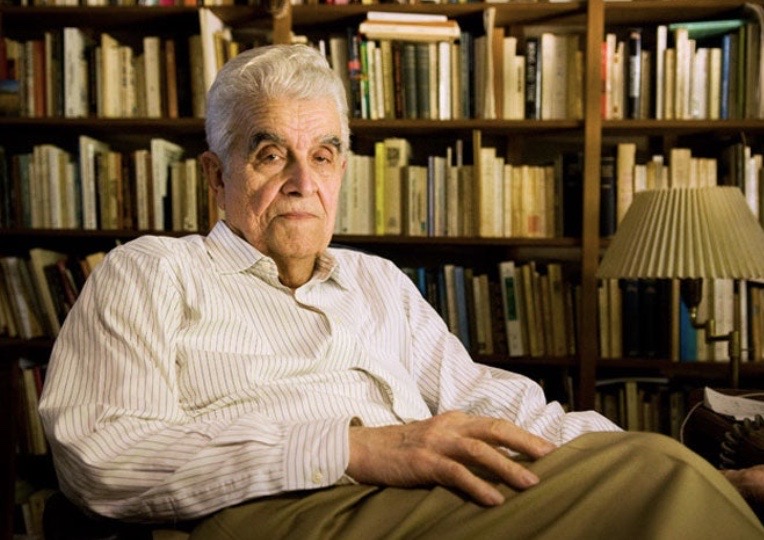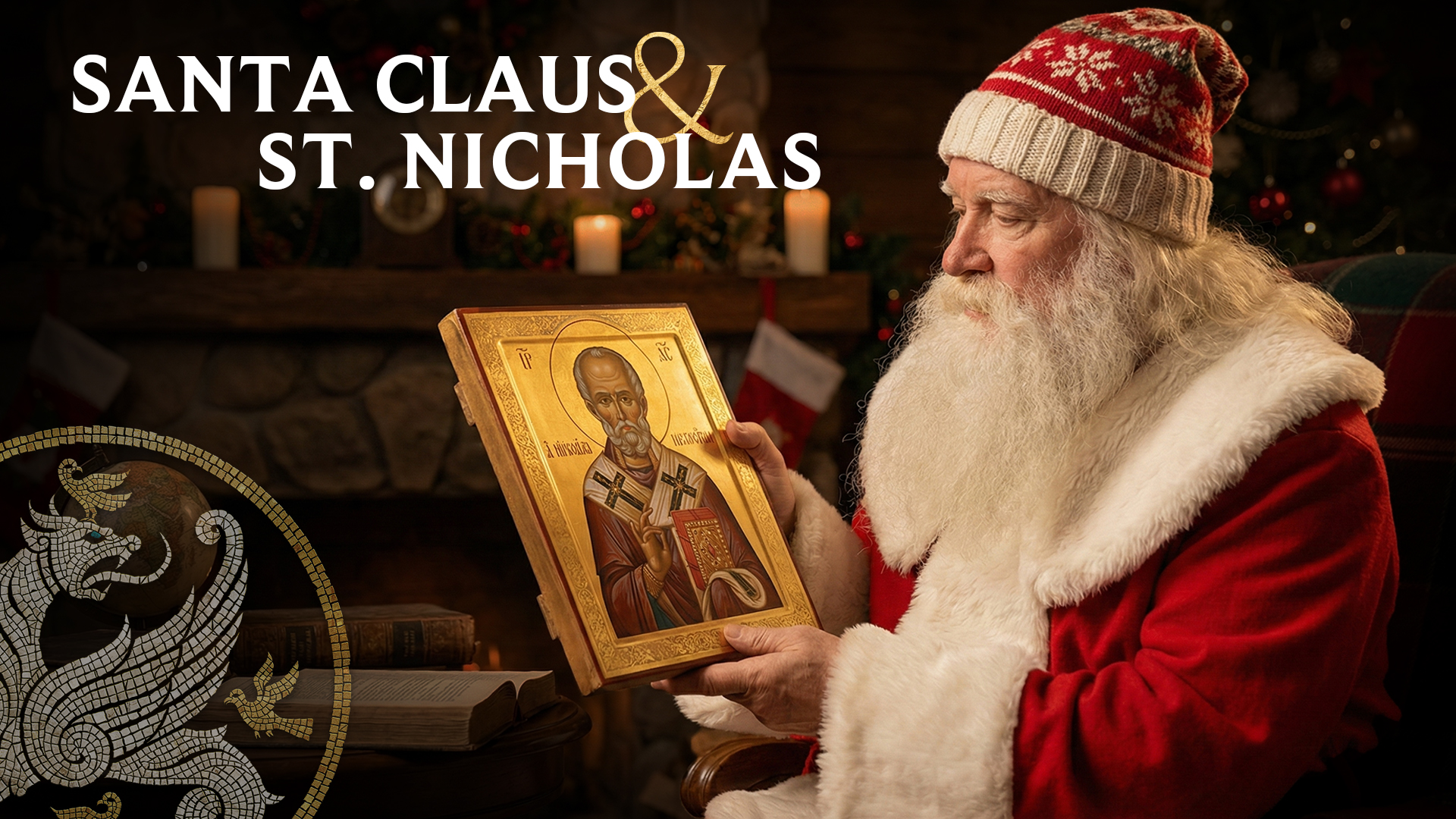
Philosopher and theologian D.C. Schindler has written a wonderful pair of articles that will interest many readers of the Symbolic World Blog. They are titled Perfect Difference: Gender and the Analogy of Being and The Word as the Center of Man’s Onto-Dramatic Task 1. This short blog post offers a quick review of those articles, in an attempt to shed light on the metaphysics underlying Adam’s naming of the animals. I will attempt to do so by employing some vocabulary and ideas that Schindler doesn’t himself use directly, but which I believe should be familiar and enticing for readers of this blog.
Exitus and Reditus
In Perfect Difference: Gender and the Analogy of Being, Schindler explains that there is a hierarchy of difference in unity in the chain of being. Another way to put it is that, as you move up the hierarchy of being towards God, forms have more and more transcendence over their matter.
Start with a material object, say a cup. The form of the cup exists in its matter, holding its many parts together, but it doesn’t do much more than that (considered in itself at least. We’ll talk about its interaction with Man below). The form emanates on the matter of the cup, constraining it and ensuring that the matter of the cup emerges into a cup rather than something else. That’s the rudimentary extent to which the form goes out of itself to come back to itself.
In contrast, plant forms have the ability to go out beyond their matter to come back to themselves, integrating light, water and minerals into their being for example. They also go out of themselves in the activity of reproduction, where one plant might reproduce with another separated by a great distance. And despite this movement out of themselves, this emanation that goes beyond the immediate material body of the plant, what occurs eventually is the emergence of more of that plant life. The form of the plant thus comes back to itself.
This movement of exitus and reditus goes further in animals, who do everything that plants do and more. The animal form can go out of itself to sense its surroundings and act in them in order to maintain itself in existence. Thus, animals do not merely passively take in nutrients like a plant, they actively go out of themselves to eat, drink, etc., all with a view to maintaining themselves in existence. The emanation of animal form thus goes further outside itself than what is the case in plants. But note that all of this emanation is still directed towards the emergence of more of that same animal form. The ingested nutrients, for example, eventually emerge towards the form of the animal. Or, to put it the other way, the form of the animal informs the ingested matter.
Animal reproduction heightens this exitus and reditus through sexual dimorphism. The form of a higher animal is not exhausted by either a male or female member of that species, and both need to go out of themselves and into the other for a new animal of the same form to emerge. Self-reproduction is not possible as in plants.
In higher animals, raising of offspring shows even greater transcendence of form over matter; an even greater exitus and reditus. For the form of a chimpanzee to pass from one generation to the other, for example, a certain education is required. The form of the chimpanzee must emanate from the mother through care and training until, at a certain point, it can genuinely emerge from her offspring, for example. Note that this simultaneously makes both the mother and her offspring better examples of that form. The mother chimpanzee is more fully a chimpanzee to the extent that she transmits that form to her offspring, and the baby is more fully a chimpanzee to the extent that they receive that form from the mother.
Man
But transcendence of form over matter of course goes much further in Man, who is capable of everything that animals do and so much more. In addition to the above, Man is also capable of rationally apprehending and manipulating abstract forms themselves. The human life form can go well beyond its material body to penetrate the forms of the things around it. Then, with this abstract knowledge, we can reflect, communicate and make plans that allow us to maintain ourselves in existence in ways unimaginable for subhuman life. We invent poems, we prove mathematical theorems, we sing songs, we build cities, and through those activities we sustain ourselves in existence. Thus, it is by emanating all the way into the forms of things surrounding it that the human form sustains its own emergence, i.e., that it comes back to itself.
And conversely, this dramatic exitus and reditus also allows us to raise subhuman creatures to a more transcendent level than they can attain by themselves. We enormously widen their exitus and reditus. As Schindler explains in The Word as the Center of Man’s Onto-Dramatic Task, when we rationally apprehend the forms of things, we bring them out of themselves. Their emanation reaches into our intellects. When I perceive a cup for example, and especially when I take the time to perceive its form and name it, the form of the cup is raised out of its matter and received into my intellect. This grants it a degree of self-transcendence that is otherwise inaccessible to it as a purely material object.
Also, by naming the cup and interacting with it as a cup rather than as a mere assemblage of matter, I’m returning the form of the cup to the cup. In fact, I even allow the form to emanate more profoundly unto the matter of the cup than it did initially. Indeed, for example, my drinking from the cup makes it fully a cup. It realizes its cupness.
In addition to this fairly abstract, phenomenological kind of exitus and reditus, there is another, very direct sense in which the form of the cup returns to itself through humans: we make more cups. For example, imagine that a cup maker has just discovered a new kind of ceramic cup that is very elegant. Say that the cup maker is quite pleased about this, so he names this new kind of cup and decides to make many of them. He then gathers some clay and gets to work.
Metaphysically, what we are witnessing here is human-mediated emanation, or you could say reproduction. Initially, the form of the cup emanated only on the matter of the original cup. But after emanating into the intellect of the maker, it can then emanate much more widely. It can find other clay to inform. It can reproduce. Remarkably, the cup, which is an impotent artifact when considered by itself, has thus become plant-like in its ability to go out of itself to propagate its form. Thanks to the human intellect, the cup has jumped up a layer of being.
The point holds for artifacts more generally, not just cups. That is, going through the human intellect greatly widens their exitus and reditus.
When Adam names the animals, this is also what occurs. He allows the abstract forms of the animals to come out of the animals themselves into his human intellect, before going back to the animals through his naming and tending to them. In other words, animal forms emanate into Adam’s intellect, that they may then emanate back more profoundly.
True, this human-mediated exitus and reditus can be hard to imagine seriously and positively due to our often very poor stewardship of nature, but I think dogs can provide good examples. Indeed, dogs would neither exist nor sustain themselves without human mediation. It is because our bright ancestors recognized the potential for domestication in certain wolves that dogs emerged in the first place. Or, alternatively, you could say that the dog form first emanated from the human intellect.
And more than mere selective breeding has been required on our part to make the dog form emerge and sustain itself. Think of a puppy. To fully receive and exhibit the dog form, it needs a master; it needs to be brought into human-level activities and relationships. Indeed, the puppy must first learn to be peaceful and clean. Further, it must also learn to perceive human emotions and to react appropriately. It may even go on to learn more abstract skills to become a hunting dog, a therapy dog, a police dog, etc. It is thus through a lot of human care and attention that the puppy grows up into a proper dog rather than the wild, wolf-like creature it would become if deprived of human relationships.
The point is that in the reproduction of the dog form, we see a more significant exitus and reditus than in wild animals. By going through the human intellect, it jumps up a layer of being. While the chimpanzee form, for example, emanates through chimp parenting in order to sustain itself, the dog form emanates through human nurturing in order to sustain itself.
What emerges from all this is a clear picture of Adam’s participation in creation. He brings subhuman creation into higher levels of being. As created forms emanate into Adam’s intellect, he can raise them up before emanating them back more widely and profoundly. Amazingly, we become fully human by making other creatures more than themselves. This sub-creative capacity and responsibility is a gift that God gives to man, made in His image. As Schindler puts it, “man co-decides the meaning of being in the particular way that he receives creation.”2
Conclusion
Let me conclude this article by highlighting the raw value that the subsistence of things has in itself. Schindler beautifully explains this exitus and reditus of things—their self-transcendence and self-sustaining—as a kind of independence that God lovingly grants His creatures to draw them paradoxically closer to Him:
subsistence is a fulfillment of God’s act, the proper terminus of creation. In this respect, the independence that things enjoy is not in any opposition to their dependence on God, because he is in fact the very source of their independence, and so their “return to their own [form]” is not a movement away from God, but a drawing nearer to him, a more complete entrance into his presence. The French poet Charles Péguy describes the loving father whose deepest desire, in all of the work he does to raise his son, is to see him stand, straight and proud, on his own two feet. God the Father gives being to his creatures in such a way as to enable them to stand on their own, to stand under themselves: to subsist.3
While this exitus and reditus reaches its cosmic fulfillment only in the Incarnation of God the Son, perfect and uncreated reflection of the Father, our participation in this process is nonetheless breathtaking. As we help subhuman creation come out of itself and back to itself, so do we go out of ourselves and back to ourselves, in order to offer creation as a whole, which has come out of God, back up to Him.
Linked Articles & Posts
Linked Premium Articles & Posts
- Schindler, David. C. Perfect Difference: Gender and the Analogy of Being, Communio, 43.2 Summer 2016. https://www.communio-icr.com/articles/view/perfect-difference-gender-and-the-analogy-of-being and Schindler, David. C. The Word as the Center of Man’s Onto-Dramatic Task, Communio, 46.1 Spring 2019. https://www.communio-icr.com/articles/view/the-word-as-the-center-of-mans-onto-dramatic-task
- Ibid.,, 79
- Ibid.,, 77
MEMBERSHIP
Join our Symbolic World community today and enjoy free access to community forums, premium content, and exclusive offers.



.svg)



.svg.png)






Comments